UNITE.rehab.perform
Denver's Best Sports Physical Therapy
From CrossFit to HYROX: How to Train Smarter for Hybrid Endurance Competitions
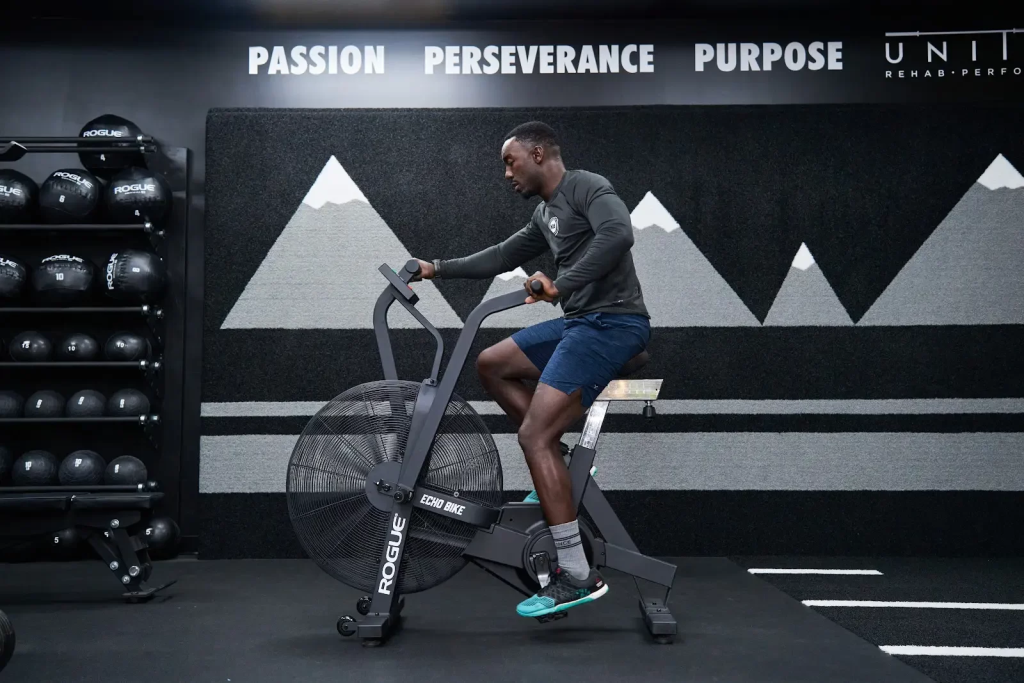
Hybrid fitness races like HYROX are exploding in popularity—and it’s easy to see why. They’re gritty, strategic, and test your engine in a way few other events can. For many CrossFit athletes, it’s a natural next challenge: you already train hard, move well, and love competition.
But here’s the thing—HYROX is not just CrossFit with running. It demands a different mindset, movement economy, pacing strategy, and recovery plan. If you want to avoid injury and perform at your best, your training has to evolve.
At UNITE.rehab.perform in Thornton, CO, we work with CrossFitters, hybrid athletes, and runners every day to build race-ready bodies. Here’s what every CrossFitter should understand before diving into HYROX prep.
HYROX vs. CrossFit: Key Differences You Need to Know
While both challenge your fitness, HYROX competitions are structured with a fixed format:
1,000m run + 1 functional station — repeated 8 times.
Typical HYROX events include movements such as:
- – SkiErg (1,000m)
- – Sled push
- – Sled pull
- – Burpee broad jumps
- – Row (1,000m)
- – Farmers carry
- – Sandbag lunges
- – Wall balls (100 reps to finish)
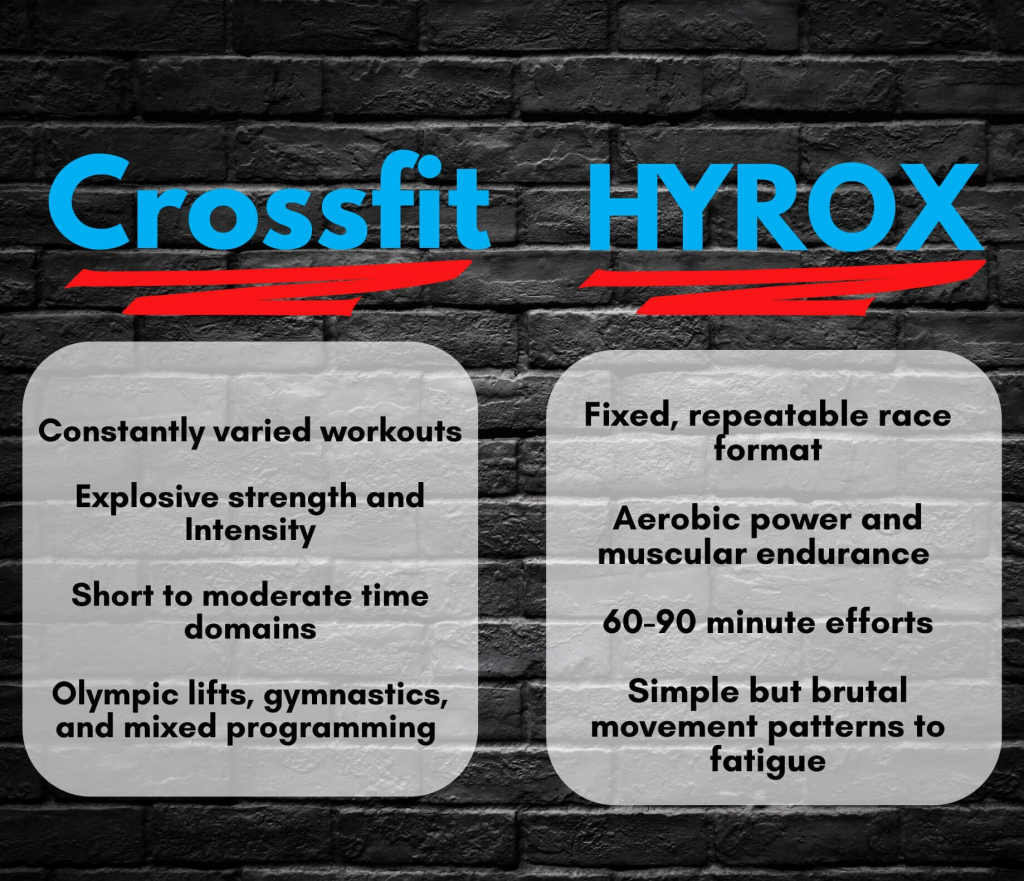
Think of it this way: CrossFit builds the engine. HYROX tests how long it runs.
You can’t rely on max power alone—you need to train for sustained output, efficient pacing, and resilience under fatigue.
The 5 Biggest Training Shifts You’ll Need to Make
1. Respect the Running Volume
Running in CrossFit is usually short, fast, and secondary to the workout. HYROX is different—you’ll cover 8 kilometers (~5 miles) total. That’s a big jump in mileage, especially under fatigue.
What to include in your training:
- – Gradually increase weekly running volume to build tolerance and prevent overuse injuries
- – Add tempo runs, threshold sessions, and recovery runs to your plan
- – Drill proper stride mechanics to improve efficiency
- – Practice “compromised running” (intervals after fatigue) to simulate race-day conditions
At UNITE, we analyze running mechanics to help hybrid athletes avoid common overuse injuries like knee pain, Achilles tendon strain, and hip tightness—all of which spike with increased running volume.
2. Build Strength-Endurance, Not Just Max Strength
You might crush a 400 lb deadlift. But can you push a heavy sled 50 meters after a 1K run and still hold good form?
HYROX rewards strength endurance—your ability to move heavy loads repeatedly without breaking down.
Train with:
- – Heavy sled push/pulls while fatigued
- – Long farmers carries to challenge grip and posture
- – High-rep sandbag lunges without breaks
- – Submaximal but repeatable loading patterns
Peak output is great, but HYROX demands that you sustain effort round after round.
3. Master the Art of Pacing
This isn’t a sprint. HYROX rewards smart, steady pacing—not redlining in the first few rounds.
Learn your pacing zones (heart rate or RPE). Practice holding them in long EMOMs or WOD-style conditioning. Simulate race-day sessions with run + station circuits to dial in rhythm.
The goal? Stay just under your redline—not above it. That’s a hard shift for CrossFitters used to going full throttle from the start.
4. Fix Movement Leaks Before They Cause Injury
Over a 60+ minute race, even small inefficiencies get magnified. Mobility restrictions, postural faults, or energy leaks you can power through in a 12-minute WOD become real performance limiters—and injury risks.
Common leaks we see:
- – Limited ankle mobility → sloppy, inefficient running
- – Weak core stability → compromised sled/carry mechanics
- – Shoulder fatigue → poor posture under load
- – Inefficient breathing → early fatigue
A functional movement screen or gait assessment at UNITE can catch these issues early and build a smarter plan for your body.
5. Prioritize Recovery Like It’s Part of Training
You’re increasing both volume and intensity, which means your nervous system, joints, and tissues need structured recovery to keep up. This isn’t optional—it’s part of your performance plan.
Recovery should include:
- – Mobility work for hips, ankles, and thoracic spine
- – Breathwork and downregulation after hard sessions
- – Manual therapy or soft tissue work when needed
- – Consistent sleep, hydration, and fueling strategies
Athletes who recover well adapt better and stay injury-free—period.
Why Work with UNITE.rehab.perform
We’re not your typical PT clinic or gym. At UNITE.rehab.perform, we’re Denver’s go-to rehab solution bridging the gap between physical therapy and hybrid athlete performance training.
Whether you’re a CrossFitter chasing your first HYROX finish or an experienced competitor eyeing the podium, we offer:
✔️ One-on-one performance coaching
✔️ Detailed movement assessments and gait analysis
✔️ Individualized injury prevention and rehab plans
✔️ Strength and aerobic development tailored for hybrid racing
✔️ Ongoing support as training ramps up
We train like you. We compete like you. And we know exactly what it takes to make the jump from the box to the race course without breaking down.
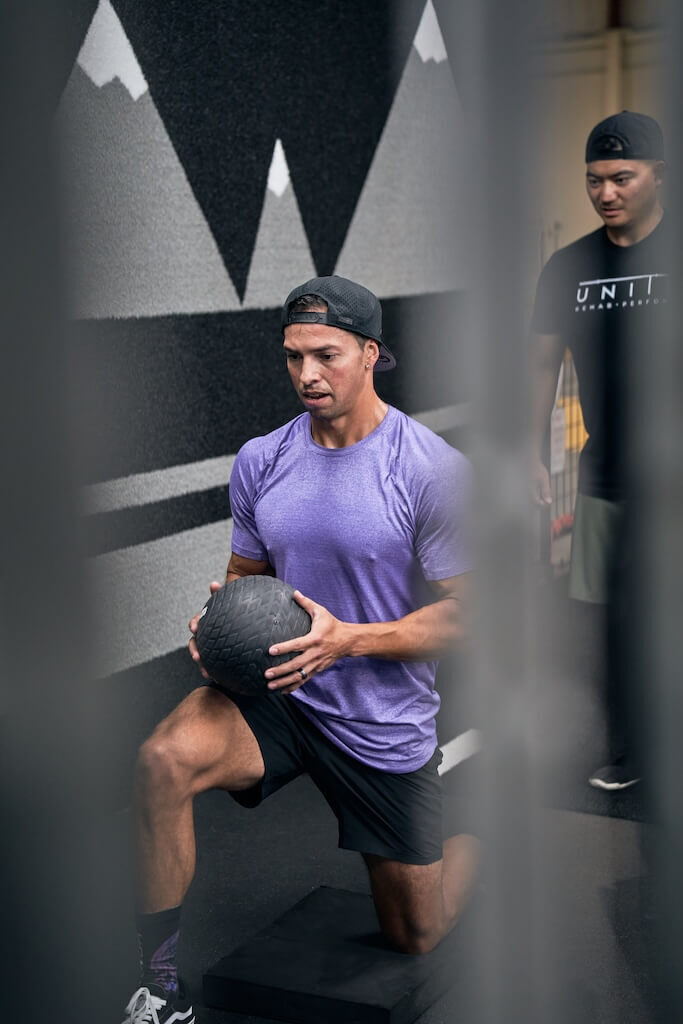

Check Out What Our Athletes Have to Say
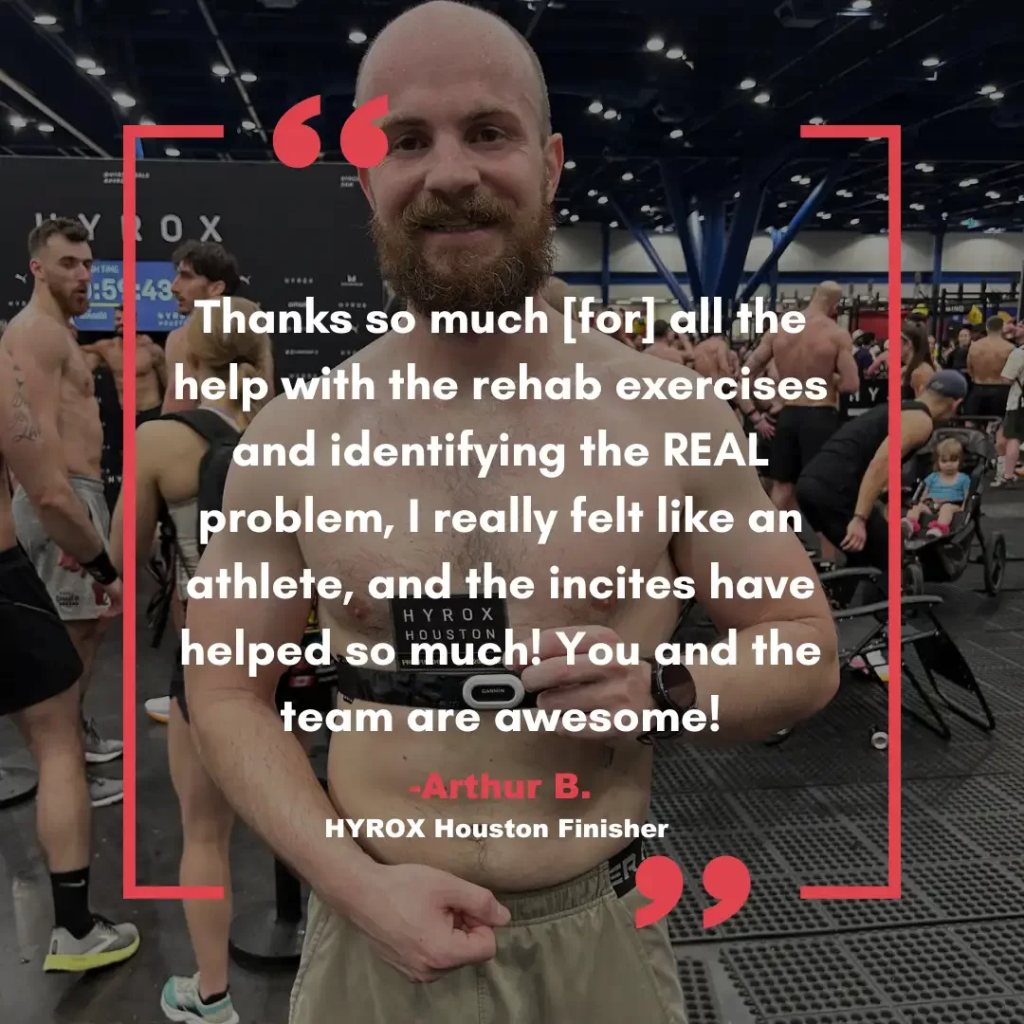
Final Thoughts: Fit Isn’t Always Prepared
You don’t have to start from scratch! Your CrossFit base is a huge asset. But going from short, intense WODs to a 75-minute hybrid competition takes planning, progression, and precision.
Train smart. Move well. Recover fully. That’s the key to not just surviving HYROX, but dominating it.
READY TO BUILD YOUR HYROX TRAINING GAME PLAN?
Schedule a movement assessment or performance consult and let’s set the foundation for your strongest race yet.
Let’s get after it — the right way.
©2020-2025 UNITE.rehab.perform LLC. All rights reserved.
UNITE.rehab.perform does not provide medical advice, diagnosis, or treatment through this website or related content. See additional information.